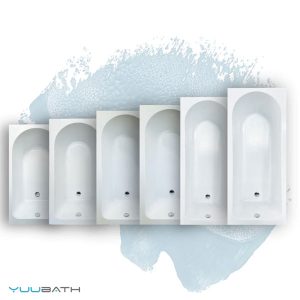Bathroom Bath Tub Design
Bathroom bathtub design is an essential aspect of creating a comfortable and aesthetically pleasing bathroom space. The design of the bathtub should not only match your personal style but also consider practical aspects such as space, functionality, and maintenance. Here are some considerations and ideas for bathroom bathtub design:
- Type of Bathtub:
- Freestanding Tubs: These standalone tubs can be placed anywhere in the bathroom, offering a luxurious and classic look.
- Built-In Tubs: Built-in or alcove tubs are installed against the walls and are a common and practical choice for many bathrooms.
- Corner Tubs: Ideal for smaller bathrooms, corner tubs maximize space by fitting into a corner.
- Clawfoot Tubs: Vintage and elegant, clawfoot tubs feature ornate feet and are often freestanding.
- Material:
- Acrylic: Lightweight, durable, and easy to clean.
- Cast Iron: Known for its durability and heat retention, but can be heavy.
- Fiberglass: Lightweight and affordable, but may not be as durable as other materials.
- Stone or Marble: Provides a luxurious and natural look, but requires more maintenance.
- Size and Shape:
- Consider the available space and the size of the bathroom. Smaller bathrooms may benefit from compact, corner, or freestanding tubs.
- Oval, rectangular, or round shapes are common, and your choice may depend on personal preference and available space.
- Style:
- Choose a style that complements the overall design of your bathroom. Modern, minimalist, traditional, or vintage styles are popular choices.
- Consider the faucet and hardware style to match the bathtub design.
- Installation:
- Freestanding tubs require more space and are often the focal point of the bathroom.
- Built-in or alcove tubs are more space-efficient and can be integrated with the overall design.
- Features:
- Jetted Tubs: Provide a spa-like experience with built-in water jets for hydrotherapy.
- Soaking Tubs: Deep and comfortable for a relaxing bathing experience.
- Bathtub/Shower Combo: Ideal for smaller bathrooms, combining a tub and shower in one space.
- Color:
- White is a classic and versatile choice, but you can also find bathtubs in various colors to suit your design scheme.
- Accessibility:
- Consider the needs of users. Some bathtubs come with features like grab bars or easy-entry doors for accessibility.
- Maintenance:
- Choose materials that are easy to clean and maintain, especially if the bathtub will be frequently used.
- Lighting and Surroundings:
- Consider the lighting around the bathtub area, as well as the surrounding materials such as tiles, backsplashes, and wall coverings.
Ultimately, the choice of bathtub design depends on your personal preferences, the available space, and the overall style of your bathroom. Explore various options, and if possible, visit showrooms to experience different bathtub styles in person.

